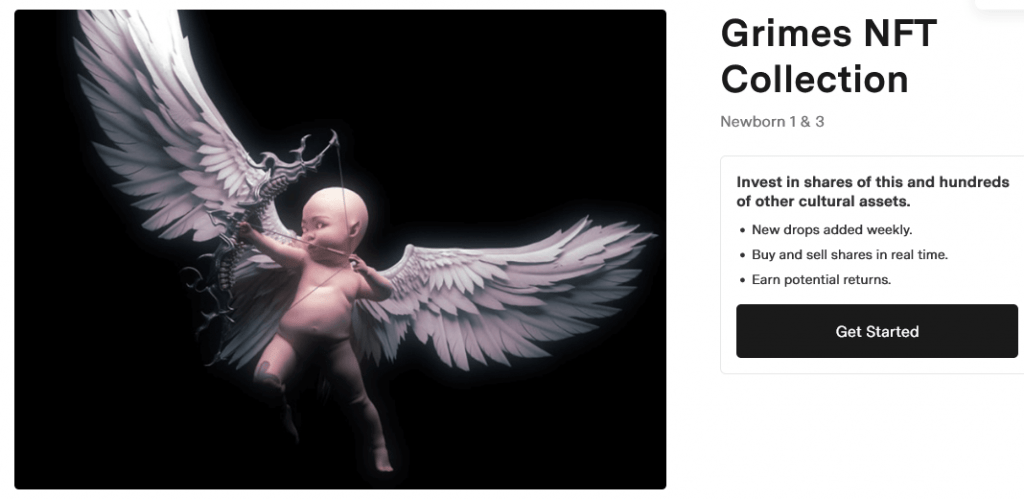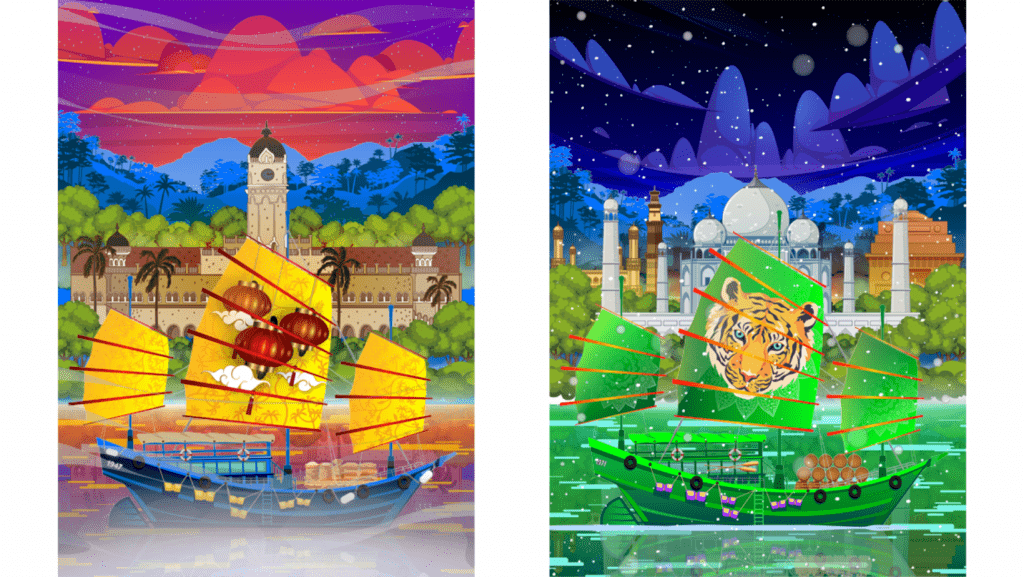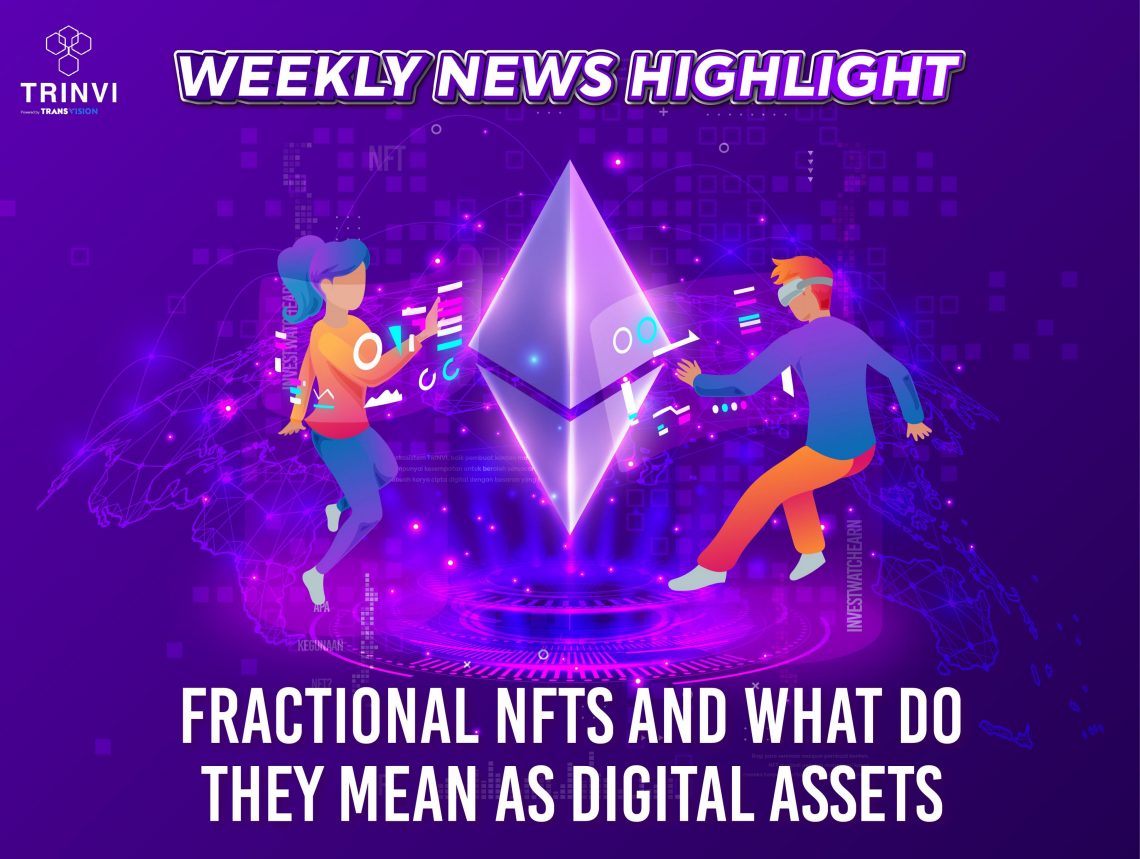One of the key defining features of NFTs is their guaranteed exclusive ownership – an NFT can’t be replicated or forged; it’s essentially a one-of-a-kind token. However, this exclusivity invariably limits what NFT holders can do with their assets, leading innovators in the space to push the borders of what’s possible for NFTs, including a way to “funge” or split NFTs!
What Are Fractional NFTs?
In simple terms, a fractionalized NFT is a token that has been divided into smaller pieces and sold separately. Also known as F-NFT, the main objective of its creation is to divide the ownership of an NFT, given that the NFT itself is unique and cannot be divided. The concept is similar to owning shares of a company, essentially opening up NFT ownership to small- and mid-tier investors, making rare and expensive NFTs more affordable and attractive to a wider group of users.
These fractional tokens give each holder a percentage of ownership of an NFT, and can be traded or exchanged on secondary markets.
The simplest way to understand how fractional NFTs work is through an ERC-721 NFT, as most non-fungible tokens use Ethereum’s ERC-721 standard. An ERC-721 NFT needs to be locked in a smart contract before it is split into many ERC-20 tokens according to the instructions issued by the NFT owner. The owner can specify all requirements that he wants, from the total number of ERC-20 tokens to be generated, their prices, the metadata to be used, and any other important properties.
It’s important to note that the fractionalization process can be reversed, and F-NFTs can be transformed back into a whole NFT. The smart contract that fractionalizes an NFT typically has a buyout option which allows an F-NFT investor to purchase all of the fractions and unlock the original NFT.
Key Benefits of Fractional NFTs as Digital Assets
As a burgeoning asset class, NFTs have greatly increased in popularity. Some collections have become so valuable that the price of owning a single NFT has become prohibitively expensive.
With such high barriers to entry, fractionalization is a potential solution to all of these problems. Breaking down an NFT into smaller pieces democratizes this new market, allowing interested parties with limited funds to affordably invest. This not only benefits investors, but also NFTs in general, because it brings liquidity to the market. Fractional NFTs inject the market with a large number of affordable tokens that offer percentage ownership of popular NFTs.

- Democratizing the ownership of NFTs. By fractionalizing an expensive NFT, it can lower the costs and make it accessible to more people; opening the chance for small and mid-size investors and collectors to participate more in the NFT space.
2. Enhancing market liquidity. As NFTs rise in popularity, some popular collections’ prices can increase to astronomical numbers, which means that they are only accessible to a few wealthy investors. The fractional NFTs make it possible for the expensive NFT to be divided into multiple, affordable tokens.
3. Providing better price valuations. With limited or no transaction history, it can be difficult to determine the right price for an expensive NFT. Fractionalizing it will allow more people to trade the digital assets and make it easier for buyers to find the actual price value of the NFT.
+62 Sails NFT Collection

This will be the first community financed movie series; 10,062 unique NFT will be released from combination of 8 traits (landscape, weather, boat color, boat cargo, hull writing, time of day, accessories and icons). There are 68 variants.
There will be 4 types of cards: Super Rare (16), Rare (180), Premium (2,031) and Regular (7,835)
Combination of cards shall form the benefit that could be redeem or utilize by the holders: Benefactor, Elite Club, VIP Access and Unleash Roadmap
+62 Sails is the first NFT project launched by TRINVI by Transvision. The project is represented by a Chinese-boat NFT artwork, which symbolizes the journey taken by the ancestors of a well-known Indonesian businessman. The journey itself is chronicled through a mini series titled Sang Soerya, in which production of the first season is supported by the +62 Sails project.
Using the ERC-721a, the Chinese-boat artwork is then split into 10,062 NFTs in 8 different traits. Each artwork can possess different rarities, where collectors can enjoy different benefits based on the type of NFT rarity that they hold. The benefits range from profit sharing to be given access to the most lucrative business opportunities by TRINVI’s mother company, Transvision.
For more information, please visit the TRINVI website
Join TRINVI’s Telegram group: https://t.me/+c41PTWu3ixQxYmRl
Join TRINVI’S Discord: discord.gg/trinvi

